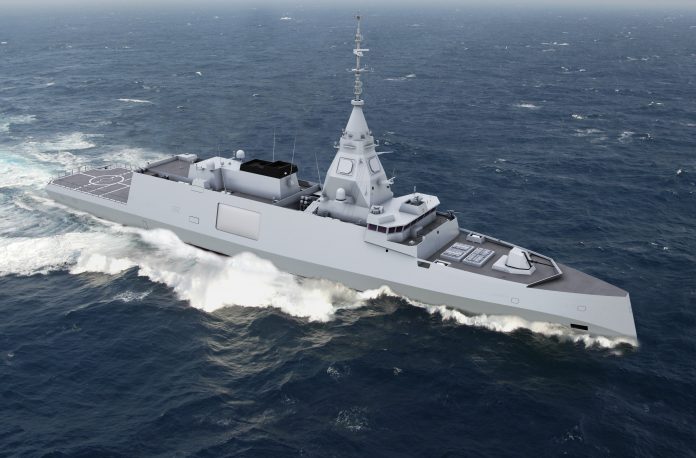
Thales hopes to have the first example of its new HF XL High Frequency (HF: three megahertz/MHz to 30MHz) wideband communications capability in service onboard the French Navy’s Frégate de Taille Intermédiaire (Intermediate Sized Frigate) vessels by 2020.
Discussing the product during the 2017 IMDEX maritime defence exhibition and conference in Singapore on 16th May, representatives from the company told asianmilitaryreview.com that this new capability, which takes the form of a card which can be installed into legacy Thales naval HF radios such as the MSN-8200 transceiver. This will provide wideband HF communications with maximum data rates of up to 120 kilobits-per-second (kbps). Current data rates permissible with HF radio are typically circa 19.2kbps. The firm continued that the new HF XL capability can use existing legacy ship- and submarine-mounted HF antennae. Moreover, the HF XL continues to offer standard three kilohertz of voice communications, while offering typical data rates of 100kbps across ranges of 100 nautical miles (185.2 kilometres) and continuing to support legacy HF waveforms. Such ranges can be achieved using atmospheric ducting; a process by which radio frequency transmissions are carried across the sea surface by exploiting the conductivity offered by the salinity of the air immediately above the ocean; as well as using standard ionospheric propagation intrinsic to HF communications.
Thales has undertaken the development of the HF XL in cooperation with the French DGA (Direction Générale de l’Armament/General Armaments Directorate) procurement agency. The increase in bandwidth offered by the HF XL capability is due to the advent of the US Department of Defence’s MIL-STD-188-110C military standard which has freed up 24 kilohertz (KHz) of bandwidth in the US high frequency radio spectrum which can be used as a contiguous solid block across which high bandwidth HF data communications can be performed. Similarly, the North Atlantic Treaty Organisation’s (NATO) STANAG-4539 is freeing up additional HF spectrum for non-US NATO members to perform wideband HF communications via spectrum allocation. The latter provides 200KHz of bandwidth which can be divided up into 16 channels each of three kilohertz in width which can be used to provide wideband HF communications. Whereas the MIL-STD-188-110C standard provides 24KHz of instantaneous bandwidth in one block, STANAG-4539 enables the 16 channels to hop across the available 200KHz providing a degree of robustness to jamming. Thales representatives told asianmiliaryreview.com that the HF XL card offers two distinct wideband waveforms; one of which conforms to MIL-STD-188-110C requirements, and the other which fulfils those of STANAG-4539. They added that, while MIL-STD-188-110C pertains to the wideband HF requirements of the US armed forces, it is possible that allied navies may possibly chose to adopt similar requirements for their navies in the future in order to ensure wideband HF connectivity with the US Navy other US armed services.
Regarding concepts of operations, company representatives continued that the HF XL capability can be employed for ship-to-shore communications, flagship-to-flagship communications when one or more naval task forces are operating together, and submarine-to-shore applications. The latter capability will be especially useful for submarines collecting Imagery Intelligence (IMINT) which wish to IMINT to other users without having to employ satellite communications.
by Thomas Withington












